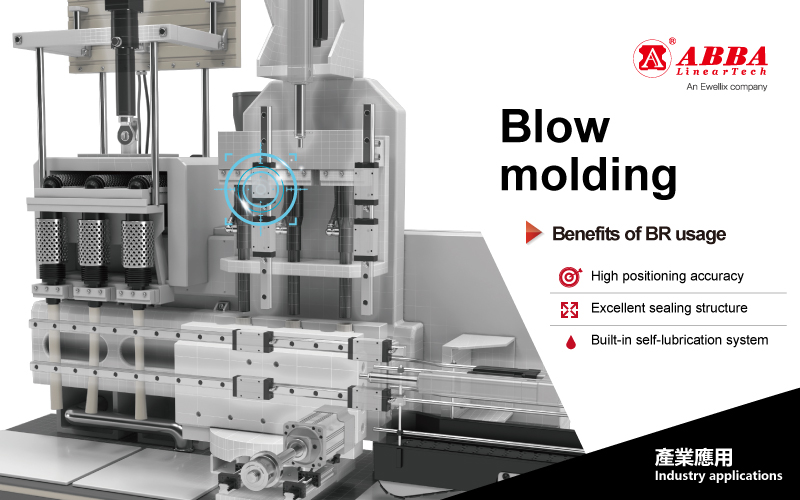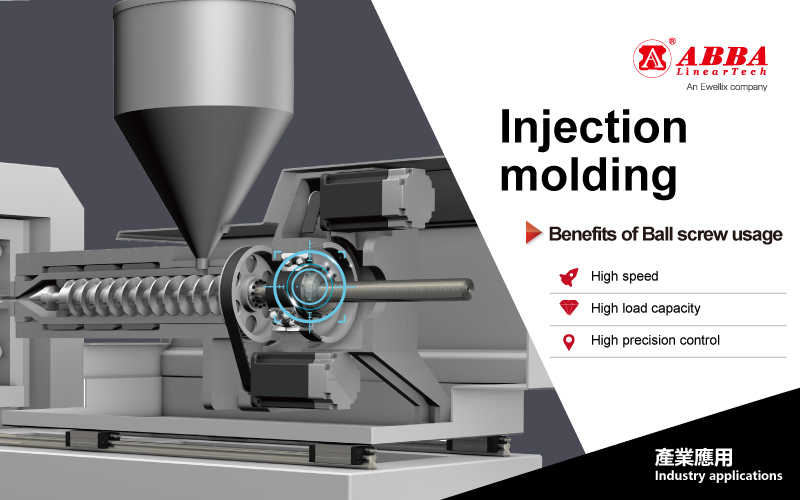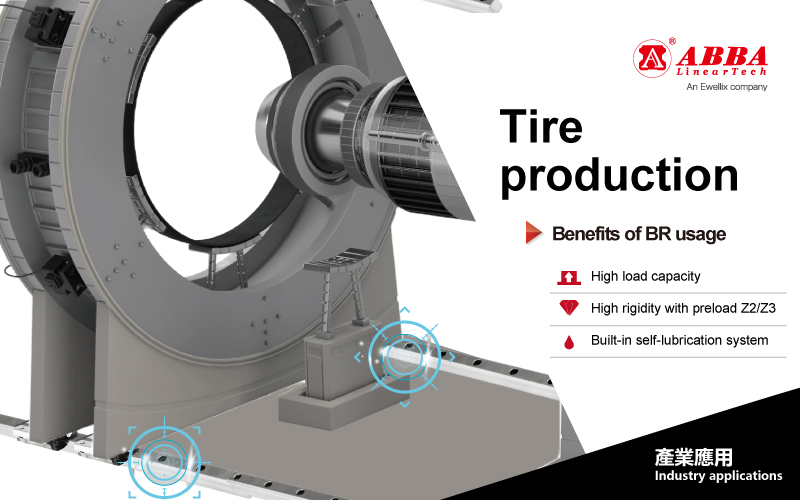ABBA LINEAR TECH CO., LTD.
Efficient & Sustainable ABBA Linear Motion Components in Plastic Equipment
The plastic and rubber industry is a broad industrial sector encompassing the production, processing, application, and sale of plastic and rubber materials. The processing is mainly divided into two categories:
1. Plastic Processing: This includes injection molding, blow molding, extrusion, thermoforming, and other processes used to manufacture various plastic products such as packaging materials, automotive parts, household appliances, and pipes.
2. Rubber Processing: This involves mixing, vulcanization, compression molding, extrusion, and other processes used to produce products such as tires, seals, conveyor belts, and shock absorbers.
ABBA linear motion components, with their high precision, durability, and reliability, can be widely applied in blow molding, injection molding, and rubber processing, among other fields. The following is a detailed introduction:
3 Key benefits of ABBA BR Linear Guides in Blow Molding Application
Blow molding is a manufacturing process used to produce hollow plastic parts. This technique is widely applied in the production of bottles, containers, pipes, and other plastic products with hollow structures.

▸ High positioning accuracy
The high-precision BR linear guides ensure the stability and accuracy of lifting, transporting, and opening/closing molds during the blow molding process. This guarantees that the molds operate smoothly without any wobbling, thereby enhancing the quality of the blow-molded products.
▸Excellent sealing structure
During the blow molding process, the environment may contain a significant amount of dust and plastic particles. The high-quality sealing structure of the BR linear guides effectively prevents dust, particles, and other contaminants from entering the rail, ensuring the cleanliness of the system and extending the lifespan of both the linear guides and the equipment.
▸Built-in self-lubrication system
The built-in self-lubrication system of the BR linear guides ensures smooth operation, reducing friction and preventing blockages or loss of accuracy due to poor lubrication. This enhances product consistency, as well as the continuity and efficiency of the production line.
3 Key benefits of ABBA Ball screw in Injection Molding Application
Injection molding is a process used to produce parts made from plastic materials. It involves injecting heated, molten plastic into a mold, then cooling and solidifying it to form complex and precise parts. Injection molding is widely used to manufacture a variety of plastic products, ranging from everyday items to high-precision industrial components.

▸ High-speed
The high-speed performance of ABBA ball screws enables rapid pushing of molten plastic into the mold cavity, significantly reducing filling time. Additionally, due to the quick and uniform filling process, the flow and cooling of the molten plastic within the mold are more consistent, reducing residual stresses caused by uneven cooling and improving the mechanical properties and long-term stability of the finished product.
▸High load capacity
The high load capacity of ABBA ball screws ensures that molten plastic can flow smoothly under high pressure, preventing incomplete filling and product defects. It also indicates that their design and manufacturing are more robust and durable, capable of withstanding prolonged high-pressure operation. This not only enhances equipment reliability but also reduces downtime and maintenance costs caused by ball screw wear or damage.
▸High precision
High-precision filling enables smoother flow of molten plastic within the mold, reducing surface defects such as flow marks, bubbles, and cold joints. This significantly improves the surface quality of the finished product.
3 Key benefits of ABBA BR Linear Guides in Rubber Processing Application
Rubber processing is the manufacturing process of converting raw rubber into useful products or components. This process involves multiple steps, including mechanical processing and chemical treatments, to alter the physical and chemical properties of the rubber, achieving the desired strength, elasticity, and durability. A typical application of rubber processing is the tire production.

▸ High load capacity
The BR linear guides use a four-row ball design with 45-degree contact angles, achieving equal load distribution in four directions. This helps reduce vibration and displacement when handling tire fixtures, improving precision in the production process. Additionally, the design accommodates various sizes and weights of tires, offering greater operational flexibility and making it easier to adjust the production line to meet different types and specifications of tire manufacturing requirements.
▸High rigidity with preloading Z2/Z3
The high-rigidity design with preloading Z2/Z3 effectively reduces friction and wear during operation, minimizing mold wear, extending equipment lifespan, and lowering maintenance costs and downtime.
▸Built-in self-lubrication system
The self-lubrication system automatically lubricates the linear guides, reducing operational resistance and wear caused by inadequate or improper lubrication. This results in smoother and more efficient equipment operation, enhancing overall production efficiency and product quality.
As technology continues to advance, the plastics and rubber industry is rapidly moving towards sustainability, high performance, and smart solutions. ABBA linear motion components have demonstrated outstanding performance and advantages in the industry. The BR linear guides, with their four-row ball design at a 45-degree angle, achieve even load distribution, effectively reducing equipment vibration and mold deformation. The ball screw's high-rigidity design maintains stable operation under high-speed conditions, contributing to increased efficiency in plastic and rubber processing. Additionally, the built-in self-lubrication system in BR linear guides reduces manual maintenance and lubricant usage, lowering maintenance costs while supporting environmental sustainability and improving the working environment. These technologies enhance production efficiency and product quality, also driving the industry's sustainable development and providing solid technical support for the future.
▸Watch the latest video to achieve high-efficiency sustainability in plastic and rubber equipment